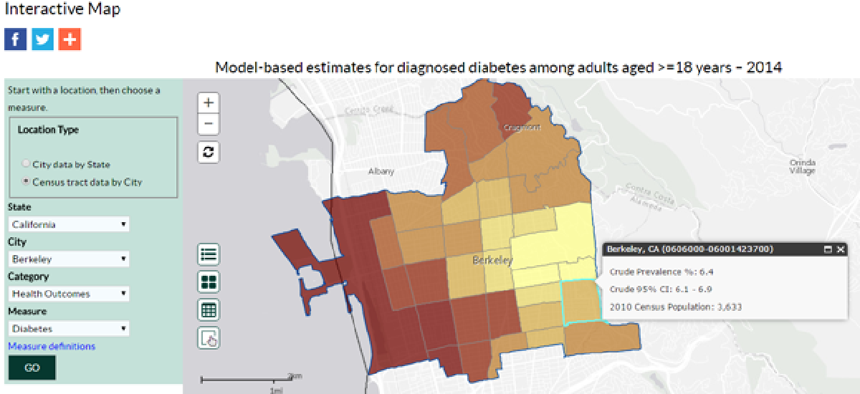Mapping neighborhood-level health indicators

The CDC’s 500 Cities website maps chronic disease indicators at both the city and census-tract level.
The Centers for Disease Control and Prevention has released data on chronic diseases at the neighborhood level for the 500 largest cities in the country.
The new data is part of the CDC’s 500 Cities initiative, which identifies, analyzes and reports on 27 chronic diseases, focusing on conditions, behaviors and risk factors that affect the public's health. While this data has been available for states, counties and some cities, this project is the first to release data on a large scale for cities and neighborhoods within cities, CDC said.
The hefty dataset has information on cancer, mental health, cholesterol, binge drinking and tooth loss, as well as many other health indicators that can be used to local public health officials to more effectively address these and other health challenges facing cities and neighborhoods.
The new web-based application lets public health professionals, policymakers and researchers see and use the data to effectively address and target interventions to specific areas where they are most needed. The interactive mapping application enables users to zoom in to a specific census tract and look at local data compared with data for the entire city.
A user zooming into a map of San Francisco, for example, can see that people in neighboring cities, like Richmond and Berkeley can have different health profiles. Berkeley shows a 6.5 percent crude prevalence of diabetes, but Richmond is nearly double that at 11.8 percent.
Users can filter datasets by state, health category (prevention, health outcomes, unhealthy behaviors) and measure (dental visits, asthma, sleep) to see the prevalence of the measure for any particular area they select along with a confidence interval and the population for the area.
The data portal is powered by Socrata, a government open-data provider supports open data sites in Colorado, Pennsylvania, Illinois and other states and cities. Data can be downloaded as a CSV, XML and a few other formats. It can also be exported by an application programming interface.
Dr. Wayne H. Giles, director of CDC’s Division for Heart Disease and Stroke Prevention, said data like this can be used to improve health in cities.
“Having the ability to report and map health data at city and neighborhood levels is a game-changer for public health,” Giles said. “Local-level data available through the 500 Cities website provide health information to better inform and target strategies that are proven to work in improving health.”
NEXT STORY: Gigapixel image analysis on the fly





